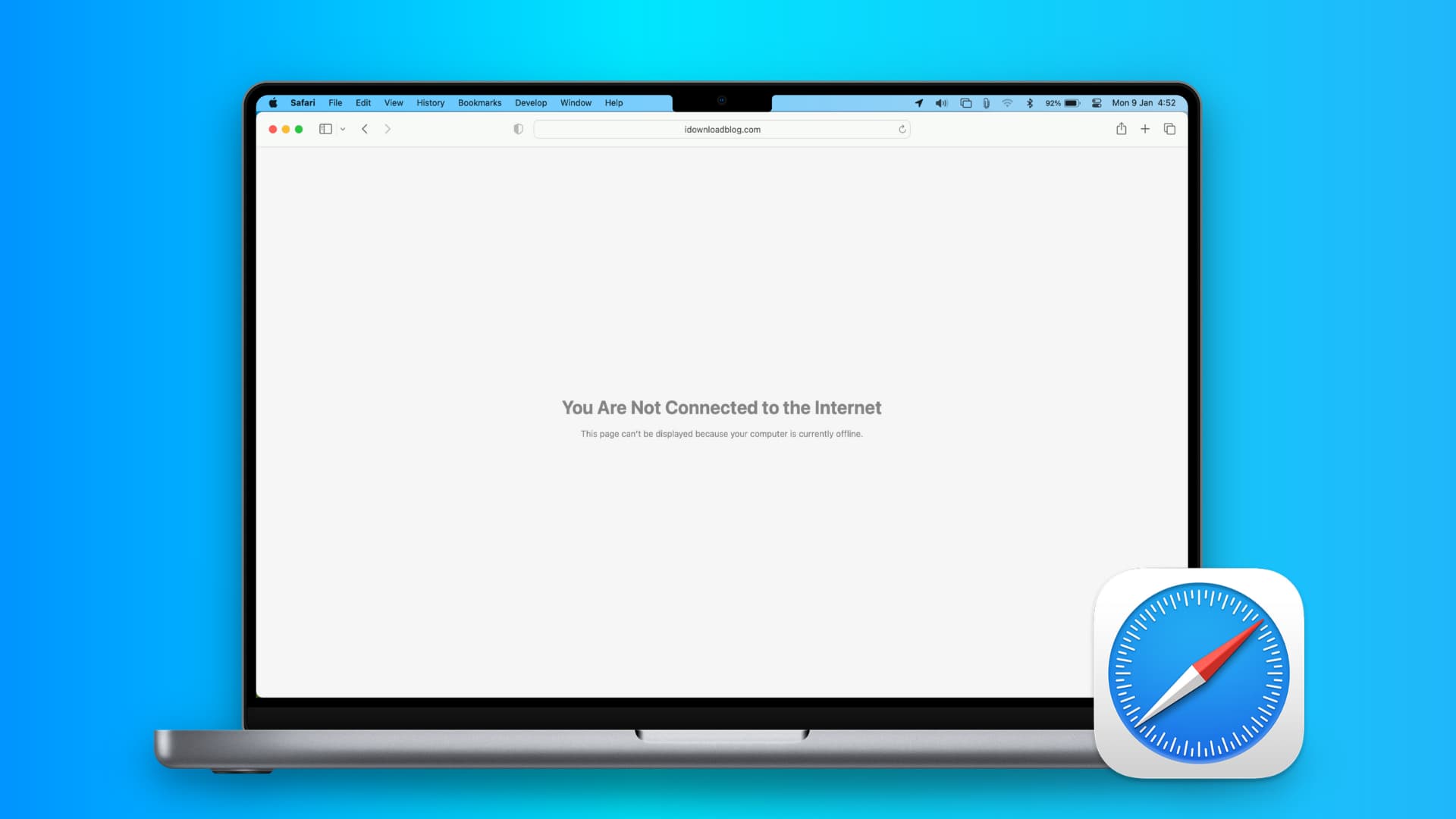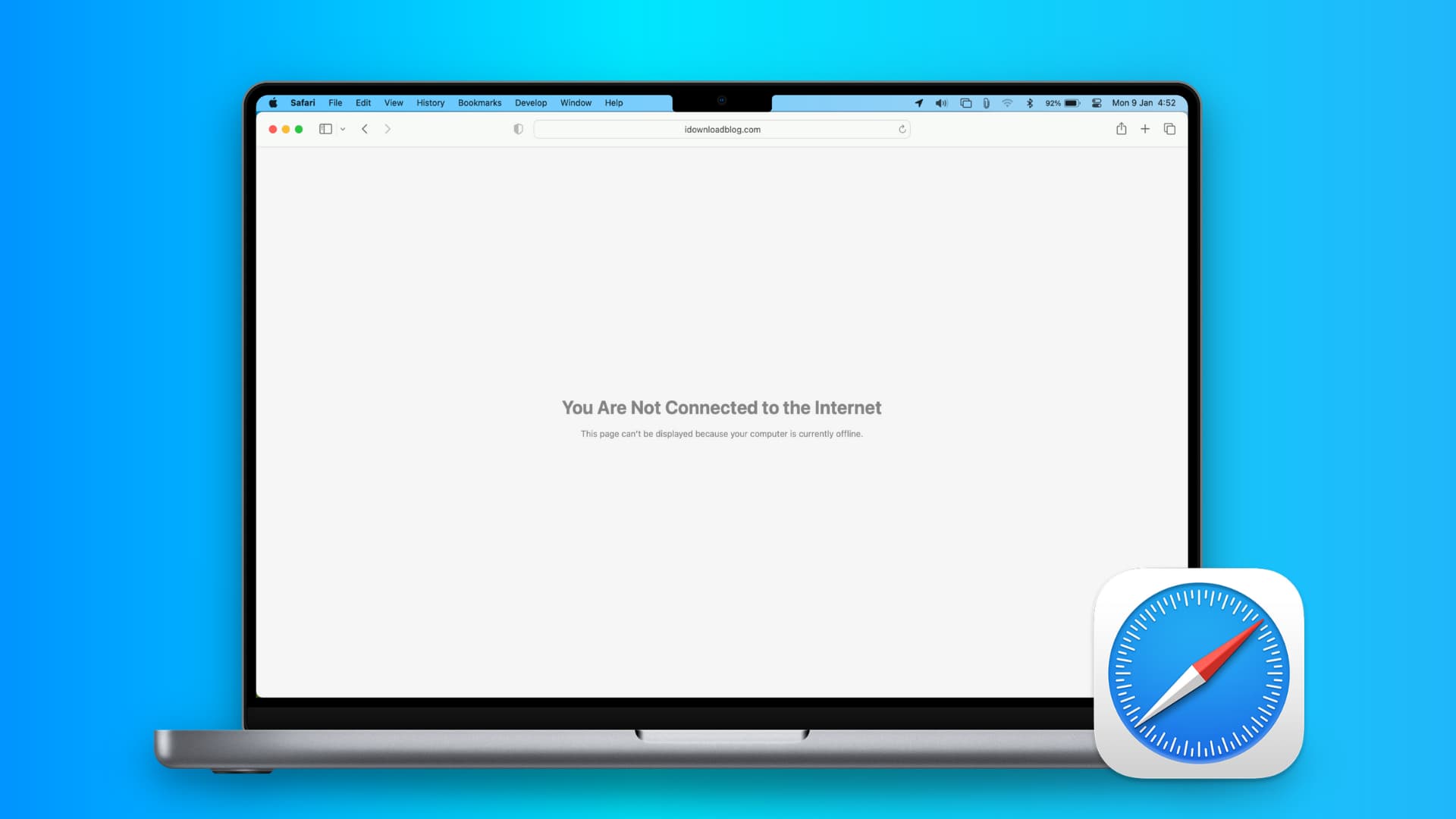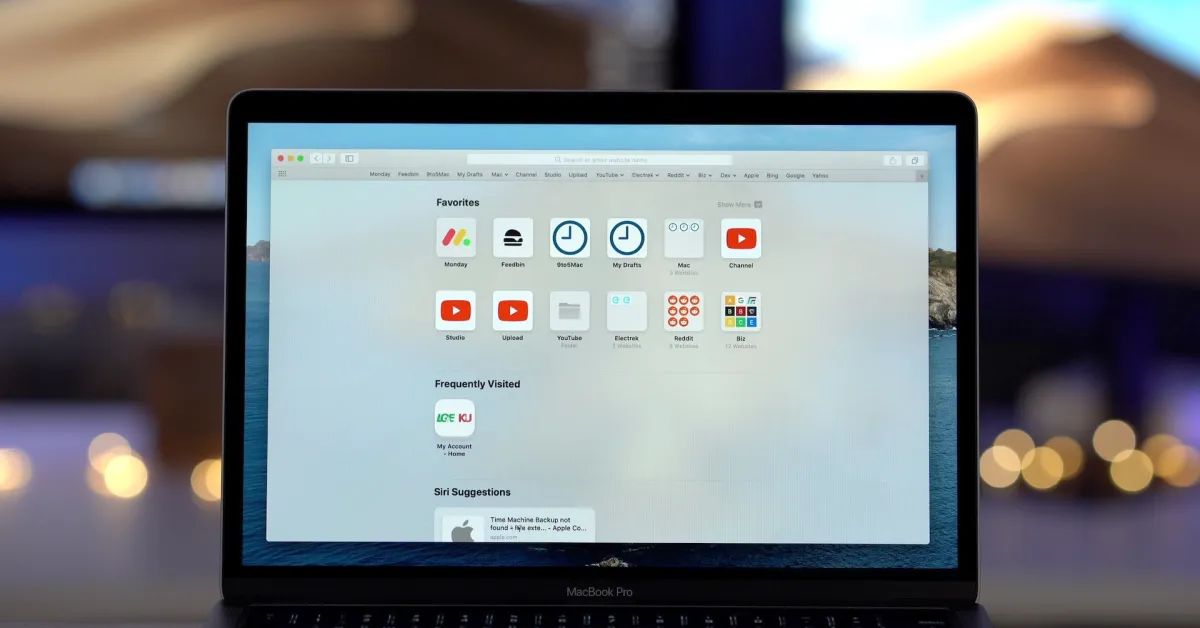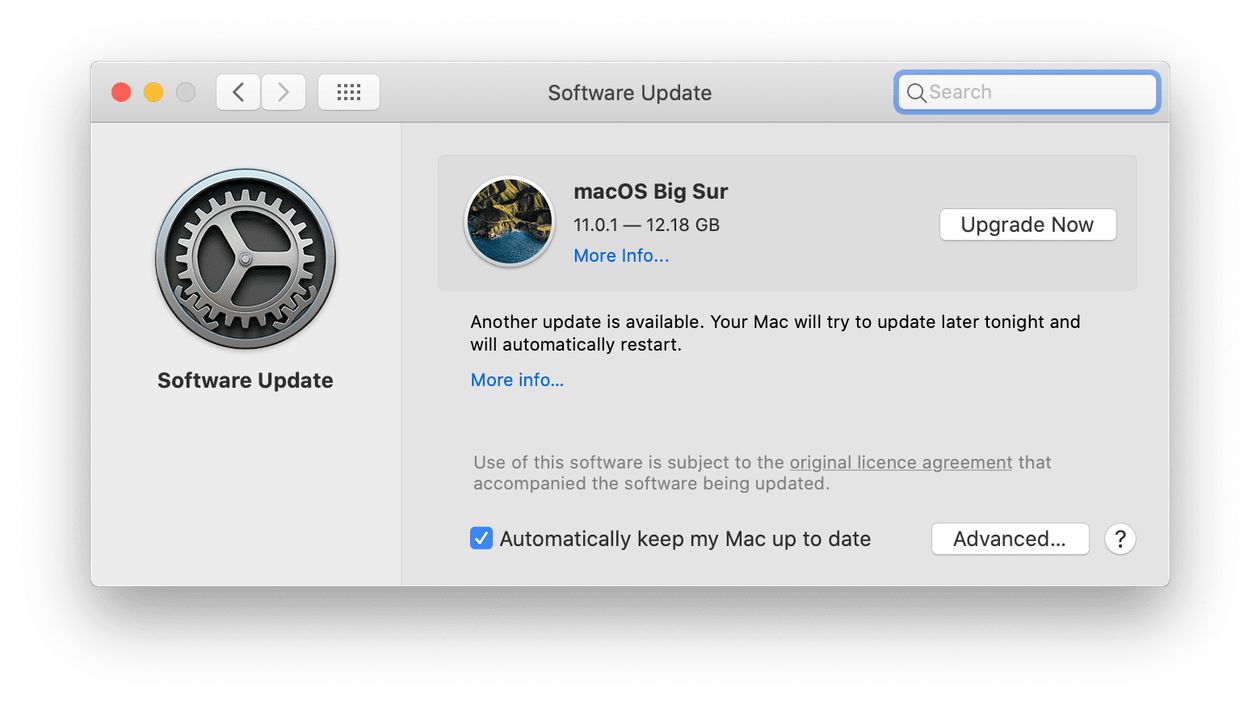Introduction
Safari, Apple's sleek and efficient web browser, offers a seamless browsing experience with its intuitive interface and robust features. However, by default, Safari restricts the use of plugins for security and performance reasons. While this is beneficial in many ways, there are instances where enabling plugins becomes necessary to access certain content or enhance the browsing experience.
Enabling plugins in Safari can unlock a world of possibilities, allowing users to leverage a wide range of extensions and add-ons to customize their browsing experience. Whether it's integrating productivity tools, ad blockers, or media players, enabling plugins can significantly expand Safari's functionality.
In this guide, we will walk you through the step-by-step process of enabling plugins in Safari, empowering you to harness the full potential of this innovative browser. By following these simple instructions, you can seamlessly integrate plugins and unlock a wealth of additional features and capabilities within Safari.
So, if you've ever encountered a message prompting you to enable a plugin while trying to access specific content or if you simply want to explore the myriad of plugins available for Safari, this guide is your key to unlocking a richer and more personalized browsing experience. Let's dive in and discover how to enable plugins in Safari to take your browsing to the next level.
Step 1: Open Safari Preferences
To begin the process of enabling plugins in Safari, the first step is to access the browser's preferences. This can be easily accomplished by following these simple instructions:
-
Launch Safari: Open the Safari browser on your Mac device. You can find the Safari icon in the dock or by searching for it using Spotlight.
-
Access Preferences: Once Safari is open, navigate to the top-left corner of the screen and click on "Safari" in the menu bar. A drop-down menu will appear, and within this menu, select "Preferences." Alternatively, you can use the keyboard shortcut "Command + ," to directly access the Preferences window.
-
Preferences Window: Upon selecting "Preferences," a new window will open, presenting a range of customizable options for Safari. This is where you can modify various settings to tailor the browsing experience to your preferences.
By following these steps, you will successfully access the Preferences window in Safari, setting the stage for the subsequent steps to enable plugins and enhance your browsing experience.
Step 2: Navigate to the Security Tab
Once you have accessed the Preferences window in Safari, the next crucial step is to navigate to the "Security" tab. This is where you will find the settings related to plugins, allowing you to enable them and expand the functionality of your browser. Here's a detailed walkthrough of how to locate and access the Security tab within Safari's Preferences:
-
Locate the Security Icon: Within the Preferences window, you will notice a series of icons at the top of the window, representing different categories of settings. Look for the icon that resembles a padlock or contains the word "Security." This icon signifies the section where security-related settings, including plugin management, can be found.
-
Click on the Security Icon: Once you have identified the Security icon, click on it to access the corresponding settings. This action will transition the Preferences window to display the security-related options, providing you with the necessary controls to manage plugins and other security features within Safari.
-
Explore the Security Settings: Upon entering the Security tab, take a moment to familiarize yourself with the various security settings available. While the primary focus is on enabling plugins, you may also encounter other security-related options that can contribute to a safer and more secure browsing experience.
By following these steps, you will successfully navigate to the Security tab within Safari's Preferences, positioning yourself to proceed with the next crucial step of enabling plugins and expanding the capabilities of your browser. This seamless process empowers you to take full control of your browsing experience, ensuring that you can leverage the diverse range of plugins available to enhance productivity, security, and entertainment while using Safari.
Step 3: Enable Plugins
Enabling plugins in Safari is a straightforward process that unlocks a myriad of possibilities, allowing users to customize their browsing experience and access a wide range of additional features. Once you have navigated to the Security tab within Safari's Preferences, the next crucial step is to enable plugins. Here's a detailed guide on how to accomplish this essential task:
-
Check the "Internet Plug-Ins" Option: Within the Security tab of Safari's Preferences, look for the section labeled "Internet plug-ins." This is where you will find the option to enable various plugins that can enhance your browsing experience. It's important to ensure that this option is selected to allow Safari to utilize plugins effectively.
-
Tick the Box to Enable Plugins: Once you have located the "Internet plug-ins" section, you will likely find a checkbox or toggle switch next to the label. To enable plugins, simply tick the box or toggle the switch to activate this feature. This action signals Safari to allow the use of plugins, empowering you to leverage a diverse array of extensions and add-ons to enrich your browsing experience.
-
Review Additional Plugin Settings: While enabling the primary option for plugins, take a moment to review any additional settings or preferences related to plugin management. Safari may offer further customization options, such as allowing specific plugins or managing plugin permissions. Exploring these settings can provide you with greater control over the plugins utilized by the browser.
-
Save and Apply Changes: After enabling the plugins, it's essential to save and apply the changes to ensure that the new settings take effect. Look for a "Save" or "Apply" button within the Preferences window, and click on it to confirm the modifications. This final step solidifies the activation of plugins within Safari, paving the way for an enriched and personalized browsing experience.
By following these steps, you will successfully enable plugins in Safari, unlocking a world of possibilities and expanding the capabilities of the browser. Whether you seek to integrate productivity tools, streamline media playback, or enhance security through specialized plugins, this seamless process empowers you to harness the full potential of Safari and tailor your browsing experience to your preferences and needs.
Step 4: Restart Safari
After successfully enabling plugins in Safari, it is essential to restart the browser to ensure that the changes take effect. Restarting Safari allows the browser to reinitialize with the updated settings, ensuring that plugins are fully integrated and ready for use. This simple yet crucial step ensures a seamless transition to a browsing experience enriched with the capabilities offered by the enabled plugins.
To restart Safari, follow these straightforward steps:
-
Close Safari: Begin by closing the Safari browser window. If you have multiple tabs open, ensure that you save any important work or bookmark essential pages before proceeding to close the browser.
-
Relaunch Safari: Once Safari is closed, relaunch the browser by clicking on the Safari icon in the dock or searching for it using Spotlight. Alternatively, you can access Safari from the Applications folder in Finder.
-
Verify Plugin Functionality: Upon relaunching Safari, take a moment to verify the functionality of the enabled plugins. You can do this by visiting websites or content that previously required plugins to determine if they now function as intended. Additionally, explore the browser's interface to ensure that the enabled plugins are accessible and operational.
By restarting Safari, you complete the process of enabling plugins and ensure that the browser is ready to leverage the enhanced capabilities offered by the activated extensions and add-ons. This final step solidifies the integration of plugins into Safari, allowing you to explore a diverse range of features and functionalities that align with your browsing preferences and needs.
With Safari restarted and plugins enabled, you are now poised to enjoy a personalized and enriched browsing experience, empowered by the seamless integration of plugins that expand the capabilities of this innovative web browser. Whether it's enhancing productivity, streamlining media playback, or fortifying security measures, the enabled plugins open the door to a world of possibilities within Safari, catering to your unique browsing requirements and preferences.
Conclusion
In conclusion, enabling plugins in Safari is a transformative process that empowers users to customize and enhance their browsing experience. By following the simple yet crucial steps outlined in this guide, you can seamlessly unlock a wealth of possibilities within Safari, leveraging a diverse array of extensions and add-ons to tailor the browser to your unique preferences and needs.
The journey begins with accessing Safari's Preferences, where you can navigate to the Security tab and enable plugins with ease. This pivotal step sets the stage for a more personalized and enriched browsing experience, allowing you to harness the full potential of Safari's capabilities.
Enabling plugins in Safari opens the door to a myriad of functionalities, from productivity tools and ad blockers to media players and security enhancements. Whether you seek to streamline your workflow, fortify your browsing security, or elevate your entertainment experience, the enabled plugins cater to a broad spectrum of needs and preferences.
Upon enabling plugins, it is essential to restart Safari to ensure that the changes take effect. This simple yet crucial step solidifies the integration of plugins into the browser, paving the way for a seamless transition to a browsing experience enriched with the capabilities offered by the activated extensions and add-ons.
With plugins enabled and Safari restarted, you are now poised to explore a world of possibilities within the browser. The seamless integration of plugins empowers you to tailor your browsing experience, ensuring that it aligns with your unique requirements and preferences.
In essence, enabling plugins in Safari is not just a technical process; it is a gateway to personalization, productivity, and enhanced functionality. By embracing the diverse range of plugins available, you can transform Safari into a tailored and dynamic platform that caters to your individual browsing needs.
As you embark on this journey of enabling plugins in Safari, remember that the browser's adaptability and versatility are now at your fingertips. Embrace the power of plugins, and unlock a browsing experience that is uniquely yours.

























